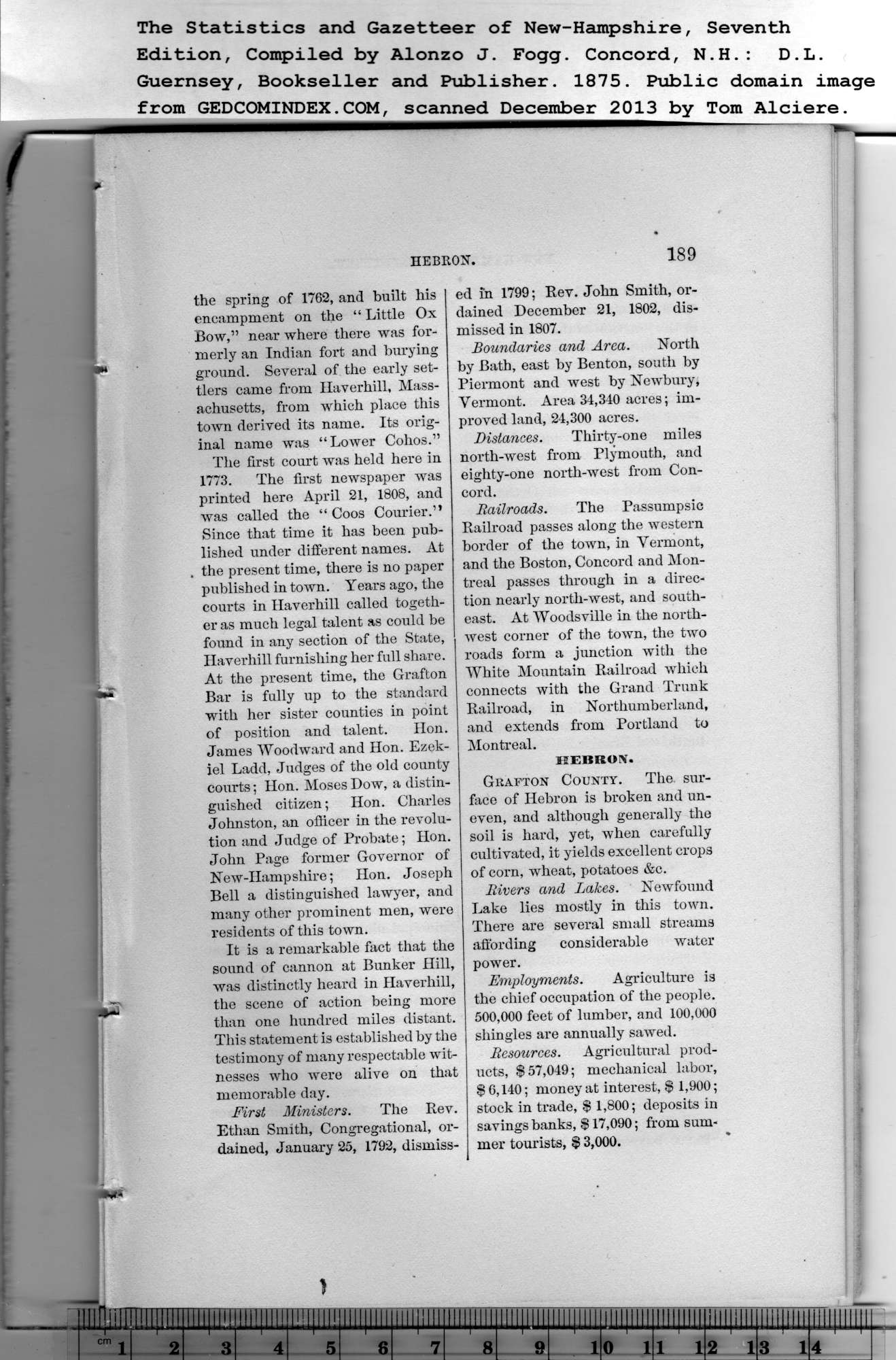|
the spring of 1762, and built his
encampment on the “ Little Ox
Bow,” near where there was for-
merly an Indian fort and burying
ground. Several of the early set-
tlers came from Haverhill, Mass-
achusetts, from which place this
town derived its name. Its orig-
inal name was “Lower Cohos.”
The first court was held here in
1773. The first newspaper was
printed here April 21, 1808, and
was called the “ Coos Courier.”
Since that time it has been pub-
lished under different names. At
the present time, there is no paper
published in town. Years ago, the
courts in Haverhill called togeth-
er as much legal talent as could be
found in any section of the State,
Haverhill furnishing her full share.
At the present time, the Grafton
Bar is fully up to the standard
with her sister counties in point
of position and talent. Hon.
James Woodward and Hon. Ezek-
iel Ladd, Judges of the old county
courts; Hon. Moses Dow, a distin-
guished citizen; Hon. Charles
Johnston, an officer in the revolu-
tion and Judge of Probate; Hon.
John Page former Governor of
New-Hampshire; Hon. Joseph
Bell a distinguished lawyer, and
many other prominent men, were
residents of this town.
It is a remarkable fact that the
sound of cannon at Bunker Hill,
was distinctly heard in Haverhill,
the scene of action being more
than one hundred miles distant.
This statement is established by the
testimony of many respectable wit-
nesses who were alive on that
memorable day.
First Ministers. The Rev.
Ethan Smith, Congregational, or-
dained, January 25, 1792, dismiss-
ed in 1799; Rev. John Smith, or-
dained December 21, 1802, dis-
missed in 1807. |
Boundaries and Area. North
by Bath, east by Benton, south by
Piermont and west by Newbury,
Vermont. Area 31,340 acres; im-
proved land, 24,300 acres.
Distances. Thirty-one miles
north-west from Plymouth, and
eighty-one north-west from Con-
cord.
Railroads. The Passumpsic
Railroad passes along the western
border of the town, in Vermont,
and the Boston, Concord and Mon-
treal passes through in a direc-
tion nearly north-west, and south-
east. At Woodsville in the north-
west corner of the town, the two
roads form a junction with the
White Mountain Railroad which
connects with the Grand Trunk
Railroad, in Northumberland,
and extends from Portland to
Montreal.
HEBRON.
Gkafton County. The sur-
face of Hebron is broken and un-
even, and although generally the
soil is hard, yet, when carefully
cultivated, it yields excellent crops
of corn, wheat, potatoes &c.
Rivers and Lakes. Newfound
Lake lies mostly in this town.
There are several small streams
affording considerable water
power.
Employments. Agriculture is
the chief occupation of the people.
500,000 feet of lumber, and 100,000
shingles are annually sawed.
Resources. Agricultural prod-
ucts, $57,049; mechanical labor,
$ 6,140; money at interest, $ 1,900;
stock in trade, $ 1,800; deposits in
savings banks, $ 17,090; from sum-
mer tourists, $ 3,000. |
